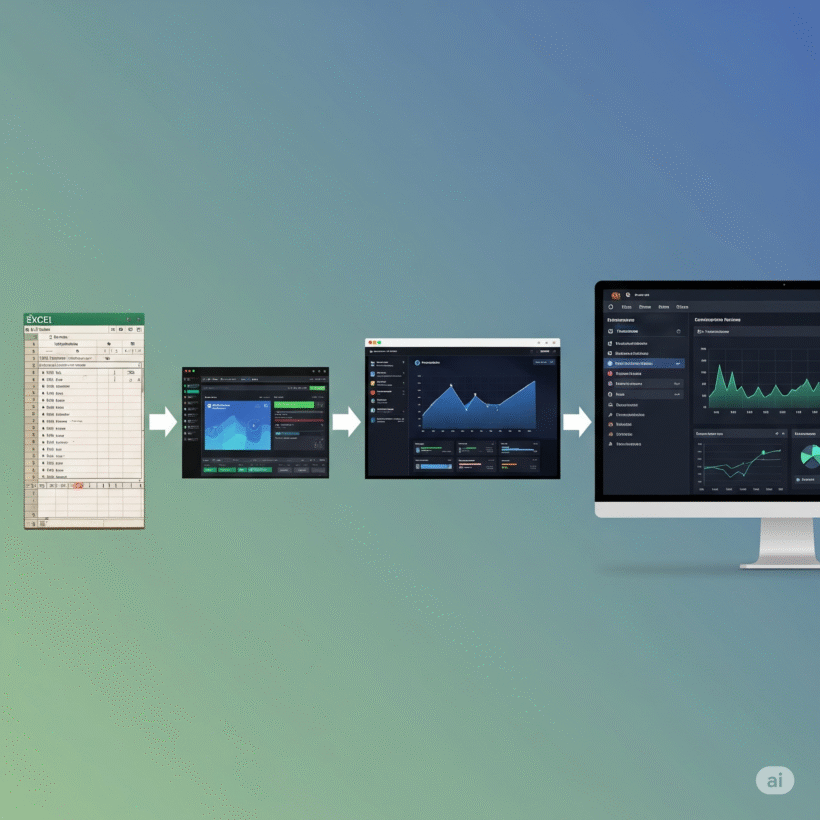Introduction: Why Decision-Making Tools Matter in Business
Business is about making smart decisions and Decision-Making Tools can be a great part of business.
What to sell, when to expand, how to price—it’s all about clarity and timing.
For decades, Excel ruled the world.
But times have changed.
From spreadsheets to smart machines, decision-making tools have evolved fast.
Let’s take a journey from Excel to AI—and see what’s next.
1. The Era of Excel: Simple Yet Powerful Decision-Making Tools
In the 1990s, Excel became the king of business tools.
Simple, flexible, and widely available, it changed everything.
Leaders used Excel for budgets, reports, and what-if analysis.
It helped visualize data with charts and pivot tables.
But Excel had limits.
Manual entry, formula errors, and siloed data slowed down big decisions.
Still, it laid the foundation for the next wave.
-
Learn more about Excel’s power and pitfalls: Microsoft Excel Overview
2. Business Intelligence (BI) Enters the Game
In the early 2010s, data visualization tools started transforming decision-making.
By 2015, Microsoft launched Power BI as a standalone cloud service.
Tools like Tableau, QlikView, and Power BI made data easier to understand.
These tools brought dashboards, real-time insights, and interactive visuals.
Leaders could now access data from across departments—in one place.
BI tools helped spot trends, track KPIs, and support data-backed decisions.
The game was shifting from instinct to insight.
-
Explore Power BI’s evolution: Microsoft Power BI History
-
Tableau overview: Tableau Official
-
What is Business Intelligence? Gartner’s BI Definition
3. Cloud-Based Decision Tools for Real-Time Access
As cloud computing grew, decision tools became faster and more collaborative.
Solutions like Google Sheets, Airtable, and Smartsheet let teams work in real time.
You could now share, edit, and comment on data from anywhere.
This made decision-making quicker, especially for remote teams.
Cloud tools reduced version control issues and improved transparency.
-
Learn about cloud collaboration: Google Workspace
-
Airtable product page: Airtable
-
Smartsheet overview: Smartsheet Official
4. Predictive Analytics: Seeing the Future Before It Happens
Next came predictive analytics.
Tools like SAS, R, and Python platforms could forecast trends with historical data.
Sales teams predicted demand.
Supply chains planned inventory better.
Businesses started to prepare instead of react.
This shift boosted profits and reduced waste.
-
What is Predictive Analytics? IBM Guide
-
Learn R programming: R Project
-
Python for data science: Python.org
5. AI and Machine Learning: The New Brain of Business
Artificial intelligence is no longer science fiction.
AI is a daily tool for smart businesses.
AI doesn’t just report data.
It learns from it.
Tools like ChatGPT, IBM Watson, and Google Vertex AI help businesses answer questions and suggest actions.
AI can analyze millions of rows in seconds.
It reduces bias, improves accuracy, and personalizes decisions at scale.
-
AI overview: MIT AI Resources
-
ChatGPT by OpenAI: OpenAI
-
IBM Watson: IBM Watson
-
Google Vertex AI: Google Cloud Vertex AI
6. From Static Reports to Dynamic Dashboards
Old reports were static.
You waited for updates and hoped they were right.
Now, dashboards update instantly.
Tools like Power BI and Looker show real-time data.
Executives no longer ask “What happened?”
They ask, “What’s happening—and what should we do next?”
This is real-time decision-making in action.
-
Looker by Google Cloud: Looker Overview
7. No-Code Platforms: Everyone Can Now Make Smart Decisions
Before, only analysts or IT experts worked with data.
Now, anyone can build dashboards or automate tasks.
Tools like Notion, Zapier, Retool, and Monday.com are easy to use.
Drag-and-drop interfaces make building workflows simple.
No coding needed.
This empowers every team member and democratizes decision-making.
-
Notion: Notion.so
-
Zapier automation: Zapier
-
Retool platform: Retool
-
Monday.com: Monday.com
8. AI-Powered Assistants for Daily Business Tasks
AI assistants are here.
They help with decisions daily.
Examples include Excel Copilot, ChatGPT in Teams, and Notion AI.
They draft reports, clean data, and summarize meetings.
This saves time and lets leaders focus on strategy.
AI is a co-pilot for decision-makers.
-
Microsoft Copilot: Microsoft 365 Copilot
-
Notion AI: Notion AI
9. Ethics in AI: Smarter Doesn’t Always Mean Better
With power comes responsibility.
AI must be ethical.
Biased data causes biased decisions.
This is risky in hiring, credit, or healthcare.
Companies need AI governance frameworks.
Transparency, fairness, and audits are essential.
The future must be smart—and safe.
-
AI Ethics Framework: OECD AI Principles
-
Microsoft AI Ethics: Microsoft Responsible AI
10. What’s Next: Augmented Decision-Making Tools
We’re entering the Augmented Era—where humans and machines collaborate.
Future tools will blend emotion, ethics, and logic.
They’ll understand tone, context, and priorities.
Imagine tools asking:
“Are you sure this fits your goals?”
These tools won’t replace you.
They will elevate your decisions.
Summary Table: Decision-Making Tools Evolution
| Era | Tool Type | Key Features |
|---|---|---|
| 1990s | Excel | Manual entry, formulas, charts |
| 2000s | BI Precursors | PowerPivot, Power Query, reporting automation |
| 2015+ | BI Tools | Power BI, Tableau dashboards, real-time KPIs |
| 2015+ | Cloud Collaboration | Real-time sharing, commenting, version control |
| 2015+ | Predictive Analytics | Forecasting, trend analysis, data modeling |
| 2020+ | AI & Machine Learning | Pattern detection, natural language, automated decisions |
| 2025+ | Augmented Tools | Human-machine collaboration, ethical AI, voice integration |
Final Thoughts: How You Can Evolve with Decision-Making Tools
If you’re still relying only on Excel, it’s time to evolve.
Start small.
Try BI dashboards or AI chatbots.
Use what fits your team, then scale.
Business success depends on timely, accurate decisions.
Modern tools make that easier than ever.
In decision-making, evolve—or get left behind.









Comments are closed.